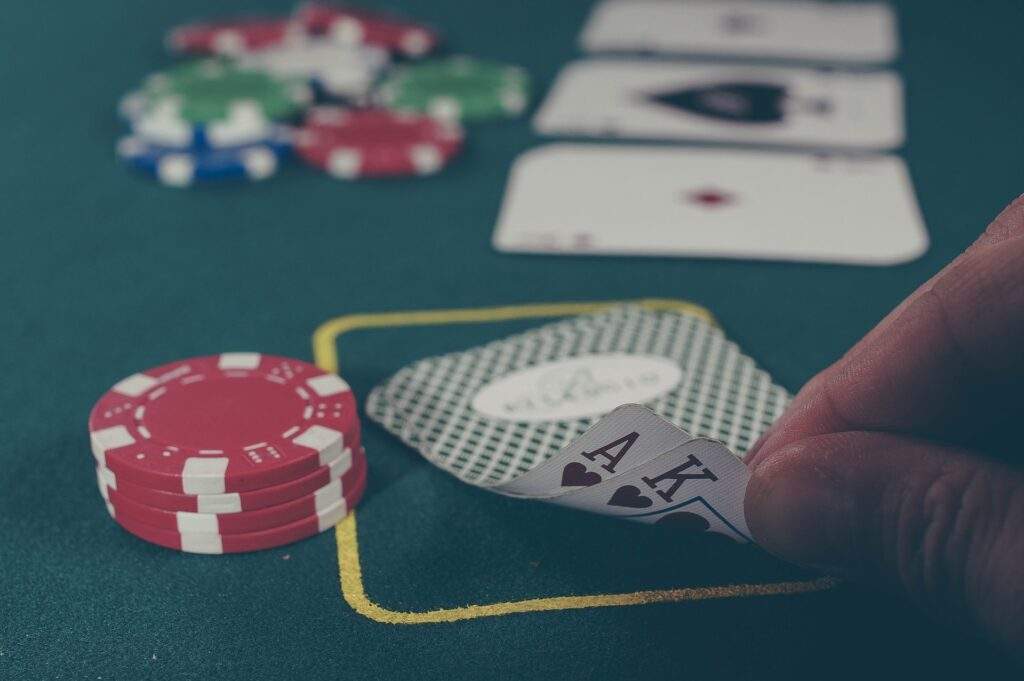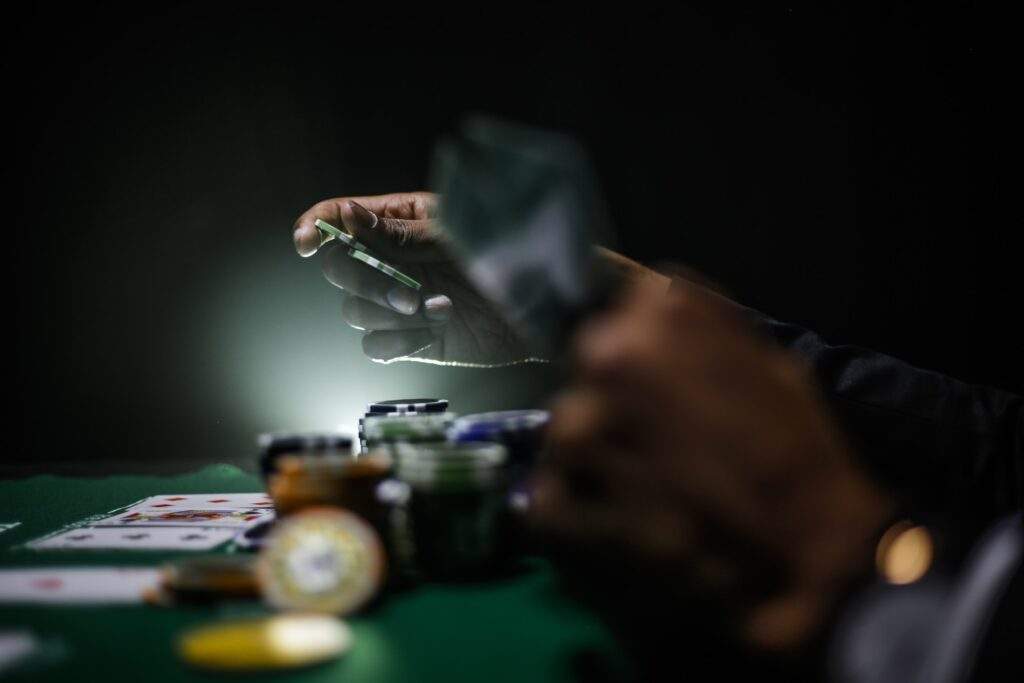Introduction:
Badugi Poker is a fascinating and relatively lesser-known variant of poker that originated in Asia. With its unique rules and emphasis on low hands and drawing, Badugi offers a refreshing and strategic gameplay experience. In this article, we delve into the intricacies of Badugi Poker, exploring its rules, gameplay, and strategies that will help you master this captivating variant. Prepare to embrace the art of lowball drawing and elevate your poker skills to new heights with Badugi.
Badugi is typically played with four players in a game and follows a structure that is quite different from other poker variants. The game starts with each player being dealt four cards – each round of betting takes place between the deal and the draw. Players must make their best hands with only four cards, however, only one of each suit can be used in a hand. After rounds of betting, players can choose to discard any number of cards and replace them with new ones from the dealer. After the draw, another round of betting takes place and the player with the lowest Badugi hand is declared the winner.
The strength of a Badugi hand depends on its lowest card, with each having a rank of Ace, King, Queen, Jack, 10, 9, 8, 7, 6, 5, 4, 3, and 2. Aces are always the lowest card but can be combined with higher cards to form a better hand. Players can further increase the value of their hands by stacking lower cards. A full Badugi hand is a combination of four unpaired and unsuited cards and is the strongest type of Badugi hand. A three-card hand is the second strongest type, followed by a two-card hand. A one-card hand is considered the weakest type of hand.

Understanding the Basics of Badugi Poker:
Badugi Poker stands out from traditional poker variants due to its distinctive hand rankings and drawing mechanics. Here are the key elements to grasp:
Four-Card Hand:
In Badugi, each player is dealt four private cards, and the objective is to form the lowest hand possible. However, unlike other lowball variants, Badugi does not use traditional poker rankings. Instead, it employs its unique hand rankings based on the number of different suits and the lowest cards in each suit.
This means that a two-card hand always beats a one-card hand. A 7♦A♠2♣2♥ is a better hand than 8♣3♦K♥, as it has the same amount of suits (three) but it contains two different ranks. The highest possible hand is a four-card Badugi, which contains four different suits and the lowest cards in each suit – for example 6♣5♦3♥2♠.
This four-card hand is called the Badugi because it is the most difficult hand to make. For a player to win, they must have four of the lowest possible cards in different suits. This hand beats all other Badugi hands, as it is the lowest possible Badugi hand. However, usually, players will be dealt hands that are not as strong, so they need to make the most of their cards to win.
Drawing Phase:
After the initial deal, players have the opportunity to improve their hand through a drawing phase. In Badugi, the goal is to obtain a “Badugi,” which is a hand consisting of four cards of different suits with no pairs. Players can choose to discard and replace any number of cards from their hands to try and form a better Badugi. After the drawing phase, there are betting rounds similar to other poker variants.
The player who can form the lowest Badugi wins the pot. If no player can form the lowest Badugi, then the player with the next highest-ranked hand will win. The hand is then evaluated as the highest card held, then the second highest, and so on. If two players have the same highest card then the next highest card is evaluated, and so on. If two players have the same four-card hand, the one who completed the hand first is deemed the winner.
If two players tie for the same Badugi, the pot is split between them. If all players remain in a hand to the end of the last betting round, the highest ranking hand will take the pot. If there is no qualifying Badugi among any players, then the highest-ranking four-card hand will win. In this situation, the pot can also be split if multiple players have the same hand. The ranking of hands is determined by the highest-value card or, in the case of a tie, by the suit of the highest-value card.
Showdown and Winning:
If multiple players are remaining after the final round of betting, a showdown occurs. Players reveal their hands, and the player with the lowest Badugi hand wins the pot. If no player has a Badugi, the lowest hand with the fewest cards of the same suit wins.
If the hands have the same value, the pot is split evenly amongst the players. In addition, if there are multiple players with the same hand, the pot is also split among them. The house is not eligible to win the pot in Badugi, therefore, if all the players at the table tie, the pot is simply carried over and added to the next hand.
Each player puts an ante (starting bet) into the pot before the game begins and then the remaining players are dealt four cards, one at a time, when it is in a clockwise order. If a player cannot make a three-card Badugi (a three-card hand with no two cards of the same suit and no two cards of the same rank) then they can either pass or throw two cards away and draw two new cards from the deck.
After all the cards have been dealt, the remaining players can bet, check, call, or fold. After the betting round is complete, all players who have not folded show their hands and the best Badugi hand wins the pot.

Key Strategies for Success:
To excel in Badugi Poker, consider the following strategies:
Starting Hand Selection:
Starting hand selection is crucial in Badugi. Aim for hands that have the potential to form a Badugi with low-ranking cards and different suits. Starting with cards of different ranks and suits provides more drawing opportunities and increases the chances of forming a strong Badugi hand.
8-7-6-4 of different suits would be ideal beginning cards. Starting with this four-card spread allows you to draw out four cards with some degree of flexibility. This allows for maximum chances of making a strong Badugi hand, an 8-7-6-3, 7-6-5-2, or 6-5-4-2.
Discard Strategically:
During the drawing phase, carefully evaluate your hand and consider which cards to discard and replace. Focus on discarding cards that prevent you from forming a Badugi or improving your hand’s strength. Calculating the number of live cards remaining in the deck and assessing the potential draws of your opponents can help guide your discarding decisions.
Consider replacing cards that fall off the bottom end of the low limit Badugi hand rankings such as 5-4-3-2 unsuited, 3-2-2-A suited, and 4-3-2-A. If you are still in the lead, now might be the time to try for a four-card Badugi. Be careful not to overvalue a three-card hand if there is a stronger possibility of a four-card Badugi. Remember, the goal is to be the last one standing with the best four-card low poker hand.
Reading Opponents:
Pay attention to your opponents’ discards and betting patterns. Their discards can provide valuable information about the strength of their hands and the types of Badugi they are trying to form. Observing their betting behavior can also help you make accurate assessments of their hand strength and adjust your strategies accordingly.
Generally, players will bet more when they are confident in their hands. Looking out for these betting signs can help inform your decision-making. Similarly, if your opponent keeps discarding the same suit, then you can assume they are trying to build a Badugi of that suit or a pure Badugi, and this may again influence your decision-making. Pay attention to the board cards and their potential implications as well. If a card in a suit that you hold is on the board, then it is likely that other players are no longer attempting to form a Badugi of that suit. This then suggests that the Badugi on the table is likely to remain as the best hand.
Positional Play:
Position plays a crucial role in Badugi, just as in other poker variants. Acting later in the betting rounds allows you to gather more information about your opponents’ actions and adjust your betting and drawing decisions accordingly. Utilize your position to gain an advantage and make more informed choices.
Position can also be used to leverage bluffs and semi-bluffs. If you are last to act, you have the greatest chance of winning the hand if your opponents fold. Determine which opponents hold weak cards, and bet aggressively to win the pot. Position can also be used to leverage small investments into larger returns for made hands. For example, if you hold a hand with four cards of the same suit or other hands withdrawing potential, betting last allows you to see how other players are betting before deciding to draw or not. Use your position to make the most informed decisions and gain a competitive edge.
Bluffing and Semi-Bluffing:
Bluffing and semi-bluffing can be effective strategies in Badugi, especially when your opponents show weakness or struggle to form a Badugi. Timely bluffs can help you win pots without having the lowest Badugi hand. Semi-bluffs, where you have a drawing hand, can put pressure on opponents and force them to make difficult decisions.
Semi-bluffs should be used when you think your opponents are unlikely to call a full bluff, or when you think your opponents may not call a full-value bet. If the board is dry, or if you have an overcard on the board that might scare your opponents, then semi-bluffs can often be the best choice. Additionally, semi-bluffs can be a good way of protecting your hand if the board might make it vulnerable. Knowing when to semi-bluff, and when to fold when semi-bluffing, is an important skill to master in Badugi.

Advanced Strategies:
Once you have a good grasp of the basics, you can explore advanced strategies to further enhance your Badugi game:
Hand Range Analysis:
Develop the ability to analyze your opponent’s likely hand ranges based on their discards and betting patterns. By narrowing down their potential holdings, you can make more accurate assessments and adjust your strategies accordingly. This skill is essential for making well-timed bluffs and value bets.
As you hone this skill, you will become a better poker player. To get better at analyzing your opponents’ hand ranges you should pay attention to their playing style and typical betting patterns. Study the board textures, and consider your opponents’ stacks and how they have chosen to play the hand. The more you practice analyzing these factors, the better you will become at determining their hand ranges. With experience, you can gain the ability to anticipate very accurately what your opponents are likely to have.
Pot Manipulation:
Control the size of the pot in Badugi to maximize your potential winnings and minimize losses. Assess the strength of your hand and the likelihood of forming a strong Badugi when deciding whether to bet, raise, or call. Adjust your betting accordingly to protect weaker hands or build the pot with strong hands.
Know when to fold as well; if the pot is large and your hand is weak, you may be better off folding rather than investing more money into the pot and risking further losses. Pay attention to how other players are betting and consider how this affects your decision. If your Badugi is weak but other players appear to have strong hands, it may be wise to fold. By carefully controlling the size of the pot, you can make better decisions and maximize your winnings while minimizing risk.
Bankroll Management:
Implement proper bankroll management to ensure the sustainability of your poker journey. Set aside a dedicated poker bankroll and avoid playing at stakes that exceed your comfort level or risk tolerance. Managing your bankroll effectively allows you to weather downswings and remain in control of your poker career.
Create a spending budget and set realistic goals for your poker bankroll that will enable you to make steady progress without overextending. Utilize bankroll management techniques such as the 25-Buy-In Rule, which states that your poker bankroll should have 25 buy-ins for the level of stakes you are playing for. This means that if you are playing cash games at $1/$2, you should have a poker bankroll of at least $50. Don’t be tempted to increase your stakes too quickly, and stick to conservative bankroll management principles that will help you grow your poker winnings over time.
Continual Learning:
Poker is a dynamic game, and strategies evolve. Stay updated with the latest trends, strategies, and resources through books, online forums, training sites, and engaging with the poker community. Continually seek new insights and adapt your game to stay ahead of the competition.
Even if you’re an experienced player, don’t be afraid to ask questions. Talk to other players and get their opinions on strategy. Ask experienced players for advice and appreciate the advice they give you. Observe and learn from them as they play. Take the time to watch the experts take notes, and be curious about the decisions they make. Be open to making changes, and be mindful of your opponents’ behaviors and decisions—these will provide many opportunities for improvement over time.
Practice, Patience, and Observation:
Becoming proficient in Badugi Poker requires practice, patience, and keen observation. Here are additional tips to enhance your game:
- Study Hand Rankings: Familiarize yourself with the unique hand rankings in Badugi Poker. Understand the hierarchy and value of different Badugi hands to make accurate assessments of hand strength and potential winning combinations.
- Hand Analysis: After each session, review your hands and analyze your decisions. Identify areas where you could have made better choices or missed opportunities. Continually assess your gameplay and seek areas for improvement.
- Bankroll Management: Practice disciplined bankroll management to ensure the longevity of your poker journey. Set aside a dedicated poker bankroll and avoid playing at stakes that exceed your financial capabilities.
- Emotional Control: Maintain emotional control throughout your Badugi Poker sessions. The game can be unpredictable, and swings can occur. Emotional stability allows you to make rational decisions and avoid tilting, which can lead to poor choices.
Conclusion:
Badugi Poker offers a unique and strategic poker experience that challenges traditional hand rankings and emphasizes low hands and drawing skills. By understanding the basics, implementing effective strategies, and continuously refining your skills, you can become a formidable player in this captivating variant. Remember to assess starting hands carefully, discard strategically, read your opponents, and adjust your play based on position and hand strength. With practice, patience, and a passion for the game, you can elevate your Badugi Poker skills and enjoy the art of lowball drawing to the fullest.
More specific strategies to keep in mind when playing Badugi Poker include betting, raising, and bluffing to give you an edge. Furthermore, you should try to play hands more aggressively and adjust your game to draw the outlier card or scare opponents with outs that can’t beat you anyway. A key component in mastering Badugi Poker is remembering what kind of cards are in play and immediately discarding any unwanted potential hazards. With experience, you will learn to recognize when you have a strong hand and when to put opponents on tilt by out-thinking and out-maneuvering them. Badugi Poker requires both skill and wit to excel and make profits at the felt.